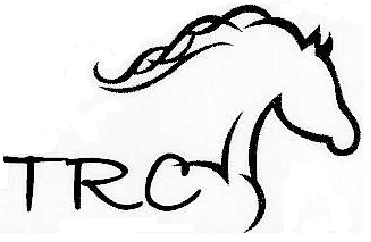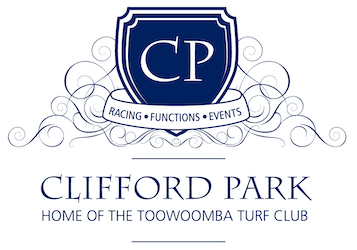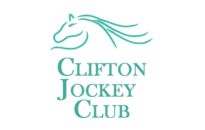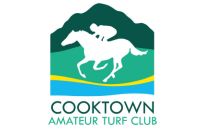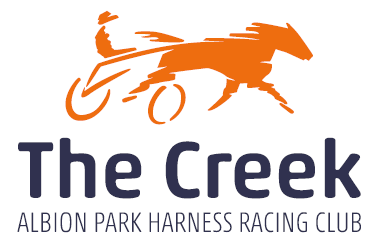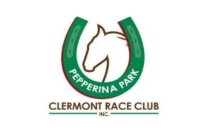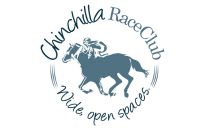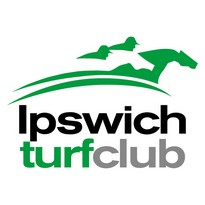
Tales Of The Past: Bart Sinclair
By Ross Stanley
Bart Sinclair was destined to be a black-type performer.
With horsemen as his immediate ancestors, the racing life of Brisbane multimedia identity Bart Sinclair is no surprise. A sheer fluke put him in touch with keys, spacebars and carriage levers.
THE EIDSVOLD PIONEERS
William and Julia Archer’s family emigrated to Norway from Scotland in 1825. In 1834, the first of their sons reached the colony of New South Wales. Eventually, the nine brothers were trailblazers at various times across far-flung places Down Under.
The Australian Dictionary of Biography states that Thomas Archer made explorative trips in 1848 to the Burnett. Land there was taken up in the names of the siblings David and Thomas Archer.
These runs were named Coonambula and Eidsvold, the latter after the town Eidsvoll in which the Constitution of Norway as an independent nation was signed in 1814.
According to documentation held by the Eidsvold and District Historical Society, Bart’s great-grandfather Guthrie Sinclair (1821-1903) and his Irish wife Mary (1827-1928) arrived at Eidsvold Station around 1851.
Guthrie, having worked previously as a shepherd at David McConnell’s Cressbrook Station in the Brisbane Valley, carried on there in the same role, receiving his wages in sheep.
Sinclair successfully tendered for a run for his growing family and flock on Chess Creek in 1854. Having hailed from Knockbrek near Inverness in Scotland, he called the unsettled area Knockbreak.
A rudimentary slab and shingle hut with a detached kitchen was erected at Knockbreak around 1859. The building is now on display at Eidsvold’s Historical Museum.
In 1887, Eidsvold was proclaimed a goldfield.

ARTHUR SINCLAIR
Naturally Guthrie and Mary’s boys James, John, Guthrie (Junior) and Bart’s grandfather, Arthur, had pastoral pursuits. Although his three brothers were strongly associated with Knockbreak and its neighbouring properties at Glencoe and Kildare, Arthur was principally a stockman.
The nature of his labours is reflected in a snippet from the Brisbane Courier (October 19, 1903). Under the Gayndah news banner, it was reported “that one hundred and fifty fat bullocks were passing from Ban Ban for the Gladstone Meat Works with Arthur Sinclair in charge.”
The quartet were all participants in horse-racing, with Arthur taking on training duties.
On his death, the Bundaberg Mail (May 12, 1922) recounted that “he was a keen judge of horseflesh and, throughout southern Queensland, he was well known in connection with My Pal and other famous winners. Mr Sinclair was a man of retired habits and led a quiet and temperate life.”
The Courier Mail (September 9, 1918) declared that “My Pal is one of the best horses that has raced in Queensland in recent years.”
At that point, Arthur’s profitable companion had won 17 times from 18 outings at Bundaberg, including two Cups. His 33 successes, often humping heavy imposts, included 21 piloted by Charles “Barney” Page, who was enroute to becoming a leading Brisbane jockey and to sport silk in England.
According to the Brisbane Courier (February 26, 1932) Arthur’s wife Janet Anne (nee Paris) “came to the district with her parents, whose home was the Craventown Hotel. The Sinclairs initially lived in a small cottage, which was the first house on the mining field, other than tents.”
“The highly active member of the Church of England also gave generous support to the Roman Catholic Church committee and various local public organisations.”
“After becoming unwell in 1932, she and her daughters Ruby and Eileen shifted to Brisbane. More than 50 members of the local tennis club attended her farewell function.”
Janet, described as the Angel of Mercy in the Eidsvold district, was inducted into the Australian Stockman’s Hall Of Fame.
Information displayed at that Outback Heritage Centre in Longreach advises that she “was a quietly spoken lady, whose bush experiences gave her many qualities to help in times of sickness, accident and death. Quietly entering the house, she would do whatever needed to be done, especially for nursing mothers, babies and children. She spent many hours hand sewing shrouds and laying out the dead.
“Dr Bancroft frequently sought her help to administer chloroform to a patient stretched out on his verandah. There was no staffed hospital in those days.
“Janet Sinclair was a keen tennis player all her life, when long skirts did not interfere with agility.”

A.B. SINCLAIR (1903-1968)
Arthur (1861-1922) and Janet Sinclair (1870-1951) produced enough children between 1889 and 1911 to field a cricket side with extras. Ancestry.com lists them in batting order as: Ellen, Colin, David, Janet, John, Ruby, Edith, Maud, Bart’s grandfather Andrew, Elsie, Lucille, Agnes and Eileen.
Andrew first saw light of day on July 5, 1903, precisely 20 years before the legendary jockey George Moore did likewise. He was named after Andrew Barton “Banjo” Paterson, an emerging literary figure whose highly popular ballads Clancy of the Overflow, The Geebung Polo Club, The Man from Ironbark, How the Favourite Beat Us and Saltbush Bill had been included in his marvellous collection The Man From Snowy River and Other Verses that went on sale in 1895.
Paterson’s early submissions to The Bulletin had been made under the pen name “The Banjo” in reference to his family’s station horse that they raced.
The volume also drew plaudits from the British. The Times newspaper compared Paterson with Rudyard Kipling, the famous wordsmith who sent his own letter of congratulations to the publishers Angus and Robertson. The pair became friends and Paterson was a guest at Kipling's Sussex home in 1901.
Paterson’s diverse exploits included amateur race-riding in Sydney, contributing to the Sydney Mail and Smith's Weekly and editing the turf journal, the Sydney Sportsman.
Brisbane’s Truth newspaper (May 14, 1950) indicated that Barty Sinclair “could ride almost as soon as he could walk and he has the unique record of having trained and ridden a winner when only 10 years old”.
“Reared in an atmosphere of horse on his father's station at Eidsvold, he was riding in work several of the thoroughbreds which were being trained on the property. Bart took a great fancy to a filly which had not long been broken in, and, during the absence of his father, decided to train her for a forthcoming amateur meeting in the neighbourhood.
“She came on well, and the kid nominated her in his father's name. When Sinclair (Senior) returned a few days before the meeting, he raised no objection to the filly having been trained and nominated, but he was anything but enthusiastic about young Bart being her rider in view of his extreme youth.
“Barty bawled, and pleaded and eventually got his mother on his side, and finally Dad gave in.
“The filly, with sundry lead-bags and Bart aboard, duly won, and of all the many racing trophies which adorn the sideboard at Mrs Janet Sinclair’s home at Ascot, the one most valued is that which is the memento of Bart's first ride in a race.”
After spending his first phase in the Burnett-Dawson basin and Central Queensland, Sinclair headed for the Big Smoke.
He plied his trade at the privately owned, bread and butter course at Kedron Park. On New Year’s Eve in 1931, he won the last thoroughbred race ever staged at the venue on Chrysler. He was again part of history when he scored on Doramjee on November 12, 1941, the day the curtain came down on Deagon.
Barty quickly stepped up to the mark at the registered courses. The Telegraph’s Albion Park report on January 30, 1932 mentioned that, “Sinclair, who built for himself at Kedron a reputation for honesty and skilful riding, was seen to good advantage on Polmania.”
An early feature success was the 1933 QTC Ascot Handicap on Lady Linden. In the 1940 Stradbroke, he was beaten two short heads on Karait. Dame Fortune smiled on him two days later when that galloper scored and Tragopan collected the Brisbane Cup.
Sinclair booted home seven from his first nine rides down the straight course at Doomben that opened in 1933. Accordingly, he mastered the similar layout at Flemington in 1940 and annexed the Maribyrnong Trial Stakes for early juveniles on Tea Cake (8/1 to 7/2) for the Pat Quinlan yard and the prestigious VRC Ascot Vale Stakes on the longshot Industry. On that occasion, in his wake were the stellar jockeys Arthur Breasley, Ted Bartle, Jack Purtell, Darby Munro, Maurice McCarten and Harold Badger, who had won the previous race on the champion Ajax.
He was also atop Manrico when he split High Caste and Ajax in a tight conclusion to the 1940 C. F. Orr Stakes.
Barty was in Melbourne to be on Graceful Mover and The Albatross for trainer “Barney” Page and owner P.J. O’Shea. The former lost a tooth when it stumbled in a rough house Oakleigh Plate but the team gained some compensation by cleaning up at Mentone and Williamstown.
Sinclair was one the Queenslanders that went to Sydney during wartime when Brisbane’s grass courses were military camps.
In 1944, his mount Winnipeg (50/1) was fourth in the AJC Epsom, Omapo prevailed at Kensington and the North Queenslander Hedui scored at Canterbury.
Importantly, Barty, having ridden work in Sydney for Harry Plant, was the likely jockey for Bernborough’s southern debut in 1946. Unfortunately, the former Brisbane trainer was overruled by owner Azzalin Romano.
A.B. Sinclair, who was not a lightweight, was a crackerjack in the saddle. He would not have been out of place riding near Kosciusko with Harrison, Clancy and an old man in that poetic chase after a runaway colt “that was worth a thousand pounds.”
Barty stowed away his raceday gear in 1948 and hung out his shingle as a trainer on the corner of Kent Street and Seymour Road, a whinny away from Racecourse Road.
The Courier Mail (Feb 6, 1948) stated that “Sinclair was a practical horseman. He gained his knowledge through the hard school of country racing in Central Queensland where, long before he reached his teens, he travelled the country with horses trained by his father.
“He has had the distinction of riding the six furlongs record holders of their time at Flemington, Mentone, and Williamstown; also Hall Stand, when he ran a seven furlongs record at Rosehill.”

Although Sinclair always operated with a small string, he fared well.
In the 1950 Queensland Derby his aspirant Mr Standby downed all bar Basha Felika, the stayer that claimed the next Caulfield Cup.
In the 1967 blue riband, his Hopeful Stakes winner Minto Crag avenged that loss. In 1960, Royal Bore saluted in the Queensland Guineas.
A superb job was done with two versatile brothers by Sun Storm (GB) from Comtesse (Ire) that were both afflicted with dicky legs.
The best of Bindana’s 10 rewards were the 1960 BATC Doomben Stakes-Summer Cup double and the QTC Ascot Handicap.
Mullala’s feature hits at Eagle Farm included the 1961 Exhibition Handicap, 1962 Brisbane Handicap and the1962 Lightning. In the south, he captured the VATC Windsor Handicap in course record time, split a Rosehill Flying with Birthday Card, ran third to the stars Sky High and Wenona Girl in the AJC Daily Telegraph Stakes before his tidy fifth in the Epsom.
A June 1963 report by Pat Farrell in Truth newspaper highlighted Sinclair’s wizardry.
Under the headline “Mullala Does The Impossible”, he wrote that “one of the greatest achievements of modern times had a triumphant finale at Eagle Farm when Queensland’s mighty Mullala scored a record-smashing win in the £10,000 Stradbroke.
In short, soreness meant Sinclair had to restrict his charge’s work to Cribb Island. It was too risky to use training tracks. Moreover, it was an extremely classy opposition that the chestnut overpowered.
Little Oxford King was a game “Show” pony that delivered with the 1964 Ascot Handicap and a hat trick of Exhibition Handicaps ending in 1966.
The feats of Tragopan and Minto Crag meant that Sinclair attained the rare distinction of training and riding Group 1 winners.
Barty was a versatile sportsman with B Grade championship titles to his credit at Nudgee Golf Club and the Hamilton Bowls Club.
His brother Colin (1890-1970), the only Queenslander in Australia’s team at the 1924 Paris Olympics, won a bout in lightweight boxing.
He also dabbled in the turf world via training and part-owning Callide River, the well backed hero in the 1953 VRC Gibson Carmichael Stakes, QTC Claret Stakes and the Tattersall’s Cup when ridden by Alan “Jock” Gollogly (Senior).
After the Scaur Fel took out the 1944 AJC Champagne Stakes, she became a wilful renegade at the start. Several Sydney mentors failed to rectify the problems and she was sent up to Colin Sinclair.
Although the issue was not really resolved, Barty was on the Felcrag filly’s back when the heavily supported commodity managed to win the 1946 Rockhampton Newmarket.
Andrew Barton Sinclair was still breaking in horses at age 60. Five years later, in 1968, he lost a long tussle with Hodgkin’s Lymphona.

BARTON JOHN SINCLAIR
“When my pregnant Mum went to hospital, my father’s words were ringing in her ears. He had made it very clear that she wasn’t to come back home if wasn’t a boy and added that his first name would be Barton,” Barton John Sinclair said.
On June 2, 1950, Joan duly delivered a brother for Dale and Kerry and a son for a relieved Barty.
“I was very close to my mother Mum, who died in 2015 aged 93. She loved the arts, was widely read but was never a racegoer because she didn’t want to encroach on my father’s ‘office’. She did all the business accounts, was a very popular host to owners when they visited and had a wonderful attitude to life. She was extremely elegant and much adored in the area around Racecourse Road,” Bart said.
“Mum’s motto was: Love many, trust few and always paddle your own canoe. She excelled in her kitchen where Kipling’s poem called ‘If’ was displayed on the wall. It is an inspirational composition that covers human qualities worth aspiring to.
“My eldest sister Dale started her working life in the music department at ABC Radio and finished up fronting ABC TV’s 7.30pm in Adelaide. Kerry was the most generous person I have ever met. She worked at Ansett until its demise in 2001 and later was carer for our mother. She suffered from ill health before passing away on December 8, 2023.
“All three of us attended Ascot State School. The girls then went to St Margaret’s and I went to Churchie. Providing all of us with a private school education was a great effort by our parents.
“My wife, Judy, is my Rock of Gibraltar. She has always worked hard and, given my weekend working hours, was committed to our kids’ sporting activities.
“She was a Resource teacher for primary school pupils with learning difficulties at places such as St Laurence’s, Hendra and Stafford, an office manager for a physiotherapist and, of course, a babysitter.”
Bart and Judy have two Brisbane-based daughters. Sarah works on the Federal Government’s Inland Rail project based in Brisbane. Her son, Tom, 23, is qualified in law and has a post-graduate position.
Kate, a Communication Manager for Suncorp, and husband Jason Clarke, a CEO of a national insurance broking firm, have a rising three-year-old in Archie and a January 29, 2024, “foal” named Jack Henry.
Bart heartily lived up to his pedigree. When he was around three, Bart and his shetland pony went lap after lap after lap around the yard. Undeterred by once landing in a rose bush, he put enough miles in Smokey’s legs to easily surpass the total chalked up by Bart Cumming’s dozen Melbourne Cups winners.
Fun with equines was also shared with his schoolmate, the late Alan “Jock” Gollogly (Junior).
As he got older, Bart escorted his father’s horses up to Lancaster Road and over the railway crossing to Eagle Farm’s bustling scraping sheds. The trips were perilous if a tram driver saw fit to loudly ring the bell.

His early jobs were strapping for his father and Jack Clayton and working for Paul’s Blinds.
Bart hadn’t relished the first two years of a Business Studies course when a chance meeting in 1970 with Gary Machon at Eagle Farm trackwork moved the first cog in what became a massive wheel.
The Sydneysider was Sports Editor for The Australian, the national newspaper that had a Brisbane vacancy because Bob Brazil was off to join The Sportsman.
The conversation led to a cadetship, and Bart’s tenure with the News Ltd organisation spanned 43 years. After turf time with The Australian, Sinclair went on to become the senior racing writer for the Sunday Sun, Daily Sun, Courier Mail and the Sunday Mail.
An initial mentor was a doyen of the racing media. J. C. (Jim) Anderson, who was working for the Sunday Mail, had been the first racecaller to be heard on course and on radio in Brisbane. The highly experienced journalist was the broadcaster for 4BC from 1932 to 1947.
“The crew from the sporting section of the Daily Sun which launched in 1982 are a very tight bunch. Robert ‘Crash’ Craddock was the MC at Kate’s wedding. Bernie Pramberg, David Falkenmire, sports editor Gary Smart, editor John Hartigan, deputy Col Allan, chief photographer Graeme Fletcher and a number of others still stay in touch. We were shattered by Paul Malone’s tragic death three years ago. Channel Seven’s marathon man, the congenial Pat Welsh, is another friend and former colleague. My writing hero was Bert Lillye,” said Sinclair.
“I was pleased to recommend Nathan Exelby to be my replacement in racing’s media when I retired from newspapers and radio in late 2012. He is talented and a passionate racing person.”
Sinclair drew the short straw when the Australian cricket team made a miserable, winless tour of Pakistan in 1982.
“Russia had invaded Afghanistan and the regular scribes, fearing an escalation, opted to stay at home. To ensure that the message boy did deliver the copy to the transmission office, you tore the money note in half. When he returned with the official receipt, you would stick the two halves back together,” Bart said.
A spot alongside bookmaker Doug Boyle, racecaller Vince Curry and Jill D’Arcy on 4BC’s popular Friday evening racing preview in the 1980s was an early venture into radio. More recently, he had a lengthy link up with Radio 4TAB.
His first foray into television was as the Sports News reader on Brisbane’s Channel 10. He was then the racing segment presenter on Sportscene, Channel 7’s must-watch, long running Sunday program with Rod Gallegos, Billy J. Smith and David Fordham among the hosts. He has also been part of winter carnival telecasts.
Sinclair, in covering some 25 Melbourne Cups, derived particular satisfaction from the victories by the likes of Michael Rodd, “Mick” Dittman, Chris Munce and Glen Boss, a group that cut their teeth in Brisbane.
He has also attended a Kentucky Derby, the inaugural World Cup in Dubai and, as a moderator, Asian Racing Conferences in Auckland, Dubai, Tokyo and Sydney.
Sinclair has held a myriad of varied positions. He was Secretary of the Trainers Association at age 18 and has been the long standing President of the Bernborough Club, a charitable group with racing and sporting interests. The body that was formed in 1976 has enjoyed luncheon interviews with a veritable Who’s Who of notables.

Bart is a highly helpful member of the Thoroughbred Racing History Association, a voluntary organisation that, in cooperation with the Brisbane Racing Club, develops and manages the Heritage Unit at Doomben and the Museum at Eagle Farm.
Stilettos and Saddles, an invaluable racing fraternity network spearheaded by Lorraine Erhart and Denise Reardon, is an endeavour that Bart reliably supports.
Bart Sinclair has also played sport. For five seasons at primary school, he was the Australian Rules captain. His efforts as rover earnt him multiple best and fairest awards.
At secondary level, he was in the Under 15A cricket side and the Under 14B rugby side.
After attending Mayne’s Australian Rules games with family friends Stan and Lil Warlow from the age of five, Bart made his debut as a nine-year-old for the club’s Mighty Midgets Under 11 side. This year he will be involved in Mayne’s Centenary celebrations.
During Andrew Ireland’s 1990 to 2001 term as the CEO of the Brisbane Bears and Lions, Sinclair was main MC for the club’s corporate functions.
The Gabba stalwart is an ardent cricket tragic.
“My father knew Keith Miller through racing. I was about 10 when the great Australian cricketer came to a charity game at Perry Park, which was then the home ground for Valleys Cricket Club and Mayne Footy Club.
At an Eagle Farm meeting many years ago, Sinclair had his photo taken with the freakishly masterful Sir Garfield Sobers, the West Indian who is widely accepted as the greatest all-rounder of all-time.
In 2018, he was awarded an Order of Australia Medal for services to racing and recognition has been made through life memberships of the Mayne Football Club, Bernborough Club, Queensland Turf Club, Brisbane Racing Club and the Royal National Association as well as his induction into Queensland’s Racing Hall of Fame.
Sinclair, who claims he was very fortunate to have an occupation that was paid to go to the races, has witnessed revolutions in the spheres of betting, technology, administrative structures, gender equality and approaches to stabling to name but a few of the transformations.
He has been sublimely excited by the iconic visitors Tulloch, Rough Habit and Black Caviar and, not to forget, the Doomben farewell to Gunsynd.
In 2012, Bart Sinclair roughly estimated that he had been to Eagle Farm 12,000 times during his life. Since then he has been on the grounds of what was once called Headquarters even more frequently because of a range of roles he has undertaken for the BRC. That agenda has included program previews, consultancy, compering, compiling members’ newsletters and hospitality assignments.
Because Bart Sinclair has handled an infinite number of form guides, it is useful to ponder what comments might apply to him.
Maybe: “Smart type of Queensland bred stallion by Snowy River from No Regrets. Knows where the winning post is and doesn’t wear blinkers. Showed speed as a juvenile but is now a dyed-in-the-wool stayer. Leading is not a problem. Has never been a one trick pony.”

